Colocation of police with city administration big theme of Bloomington council deliberations on 5-4 approval of Showers building deal
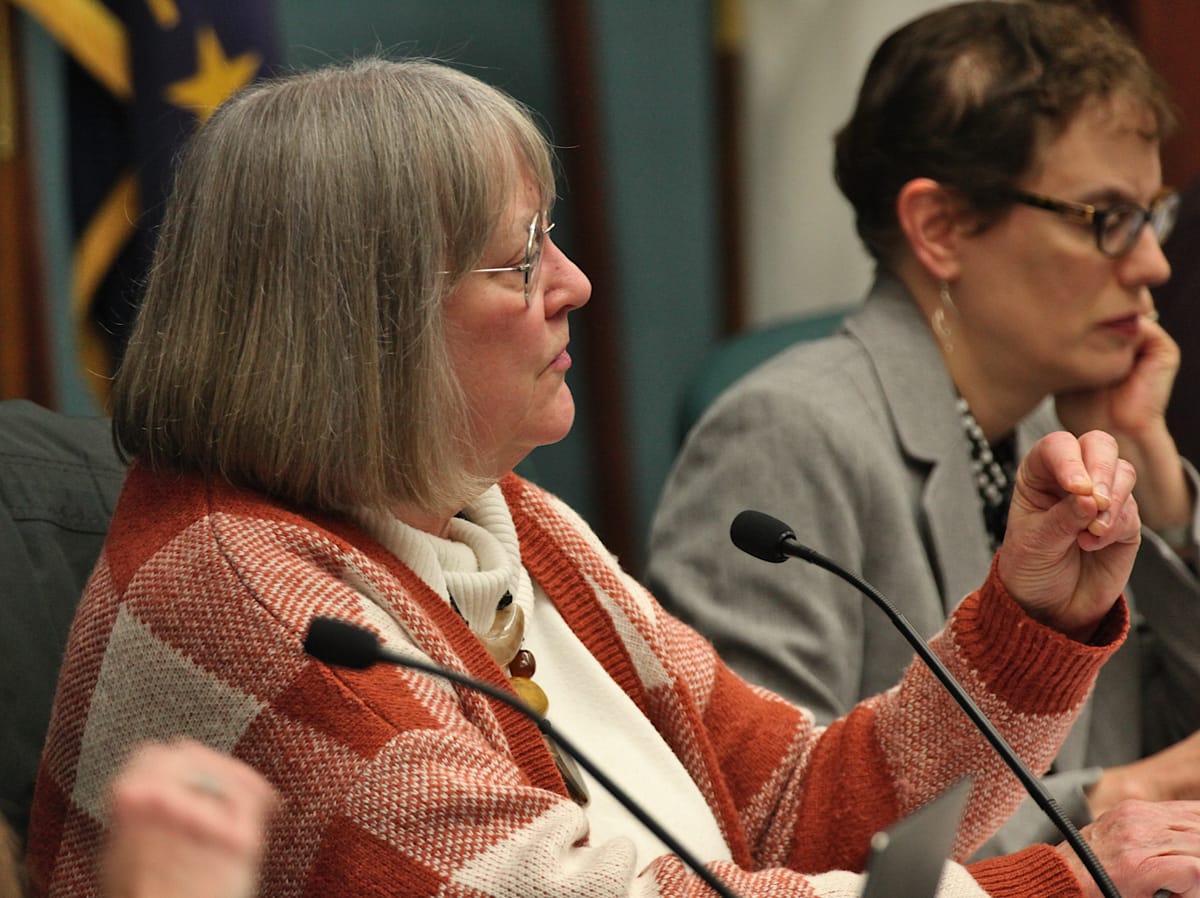
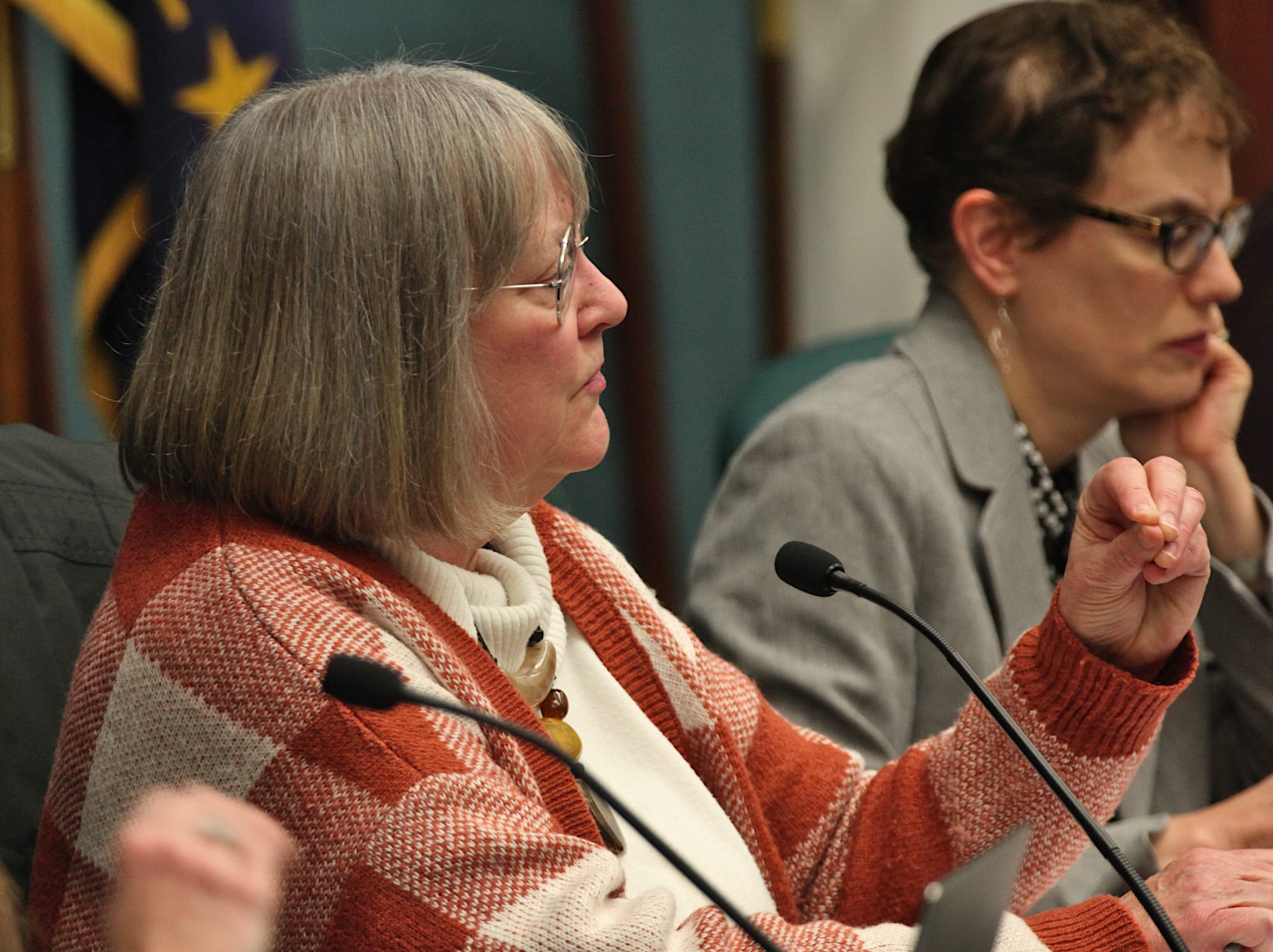
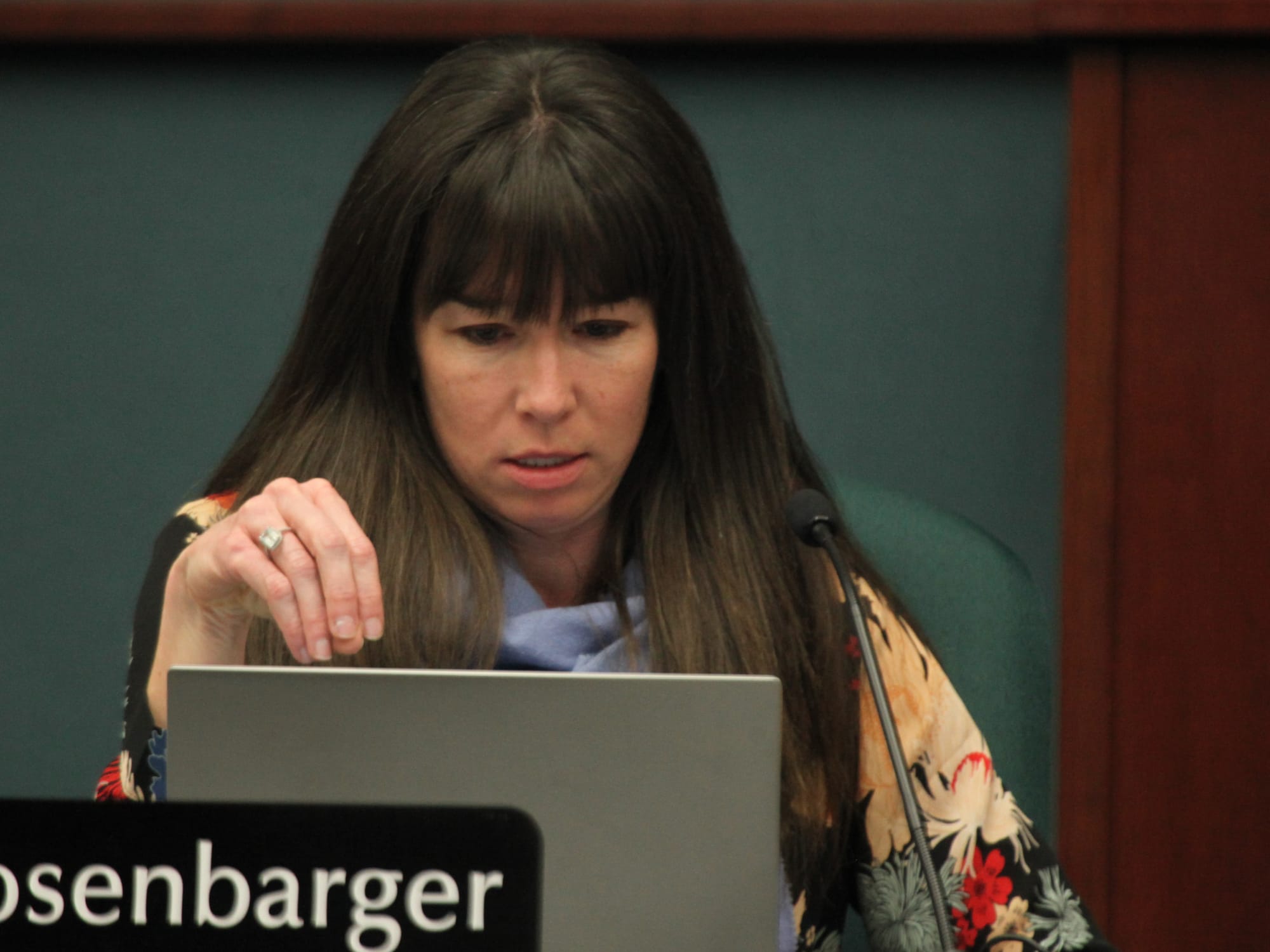
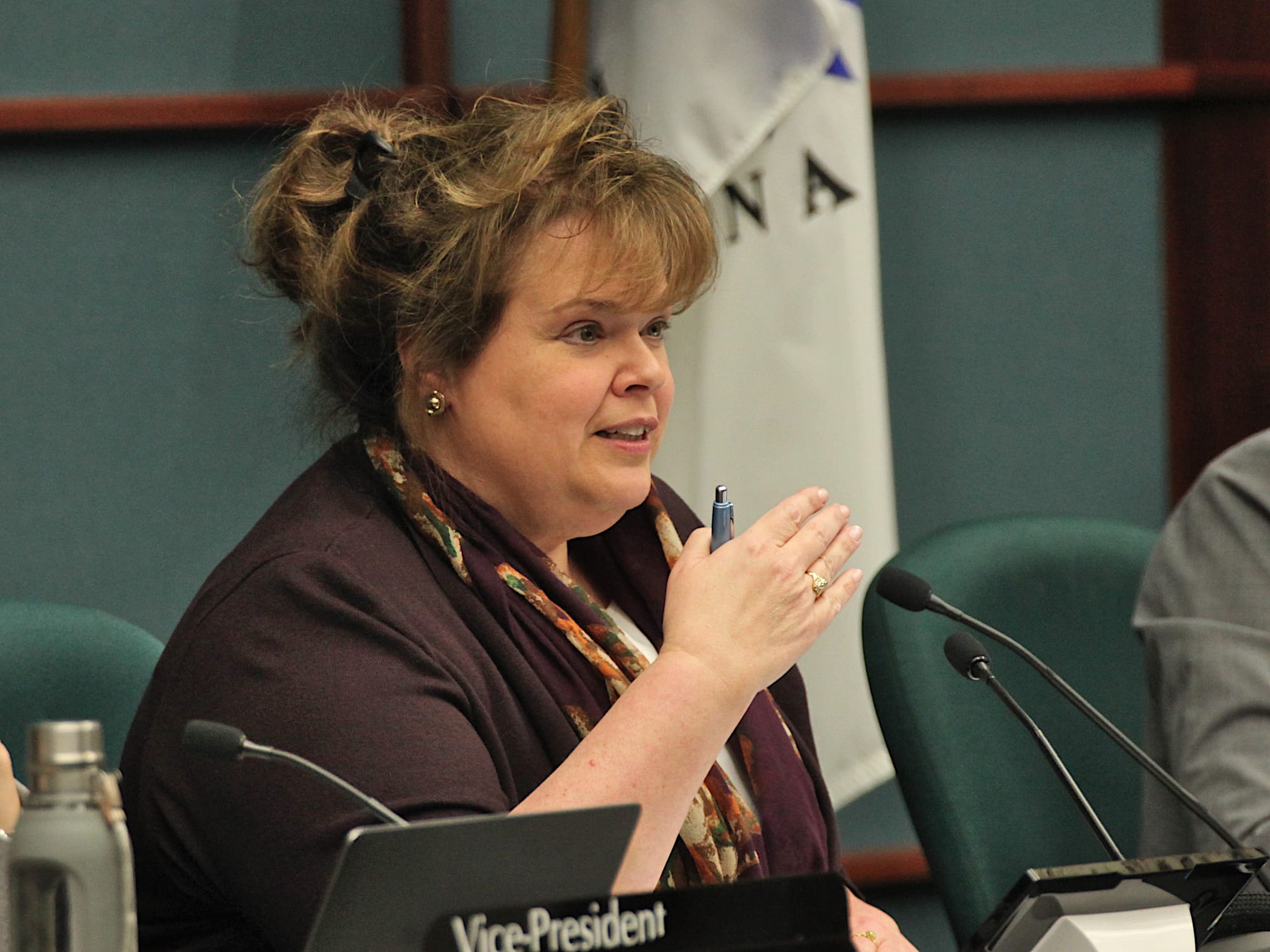




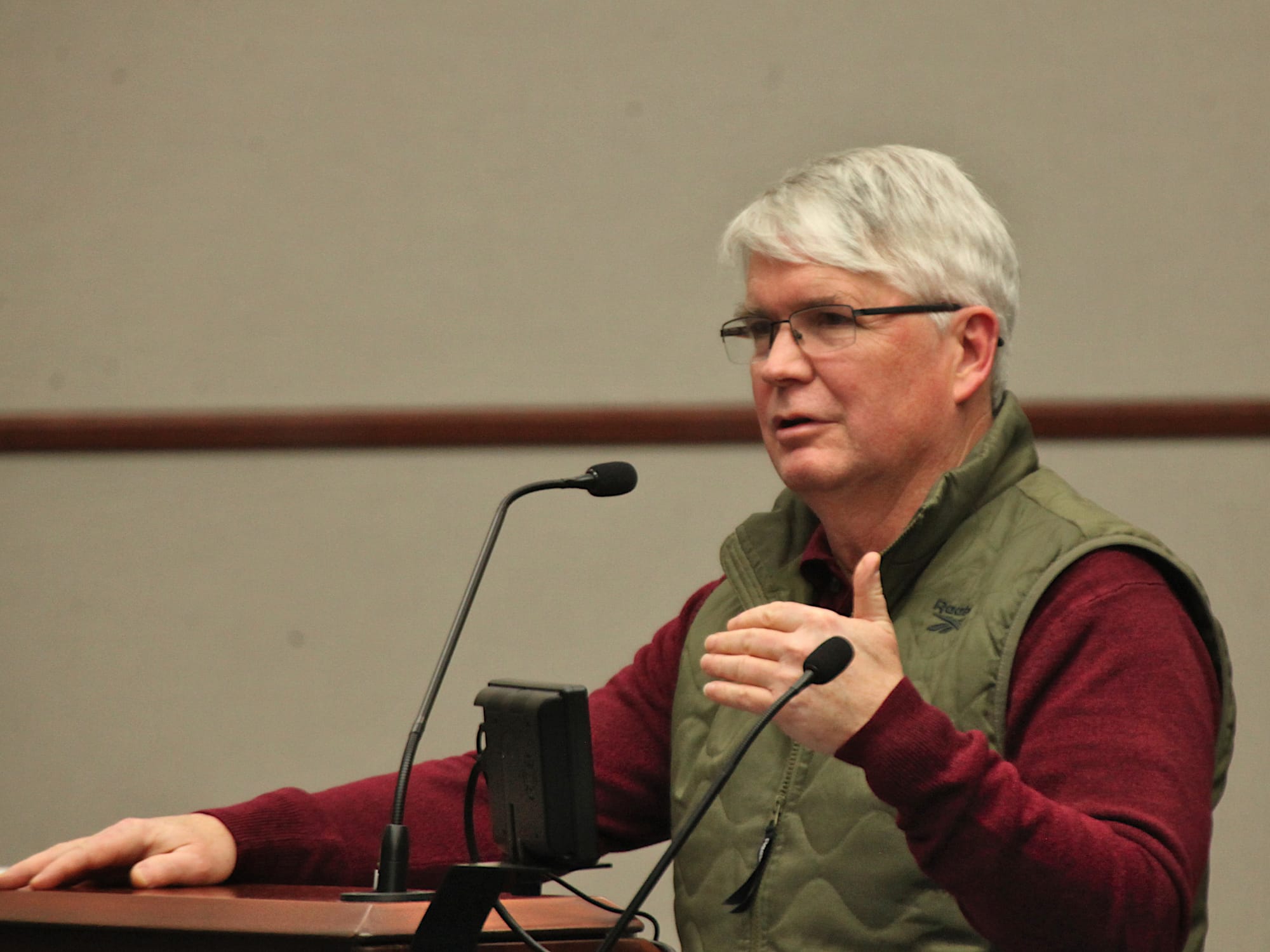

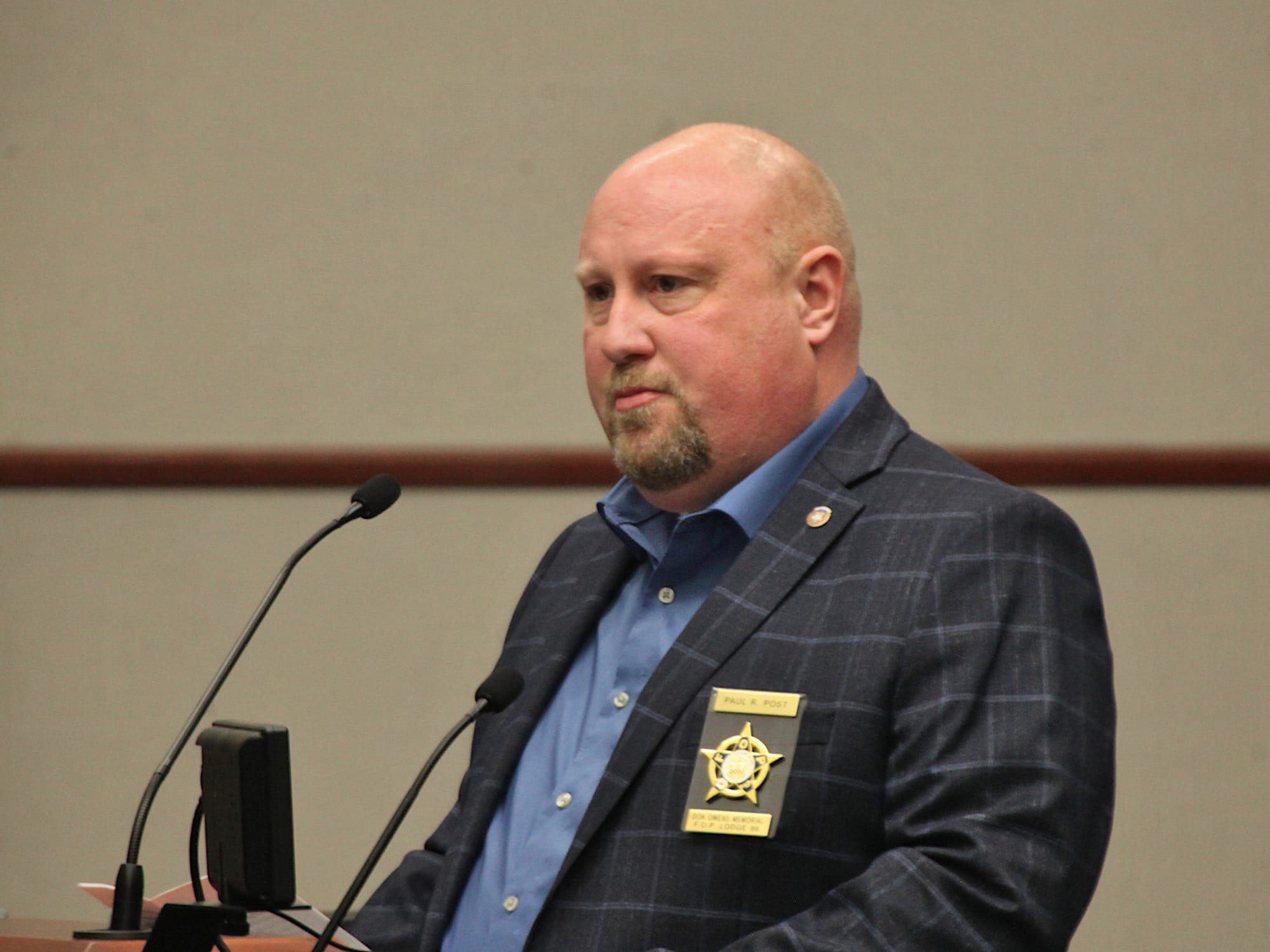
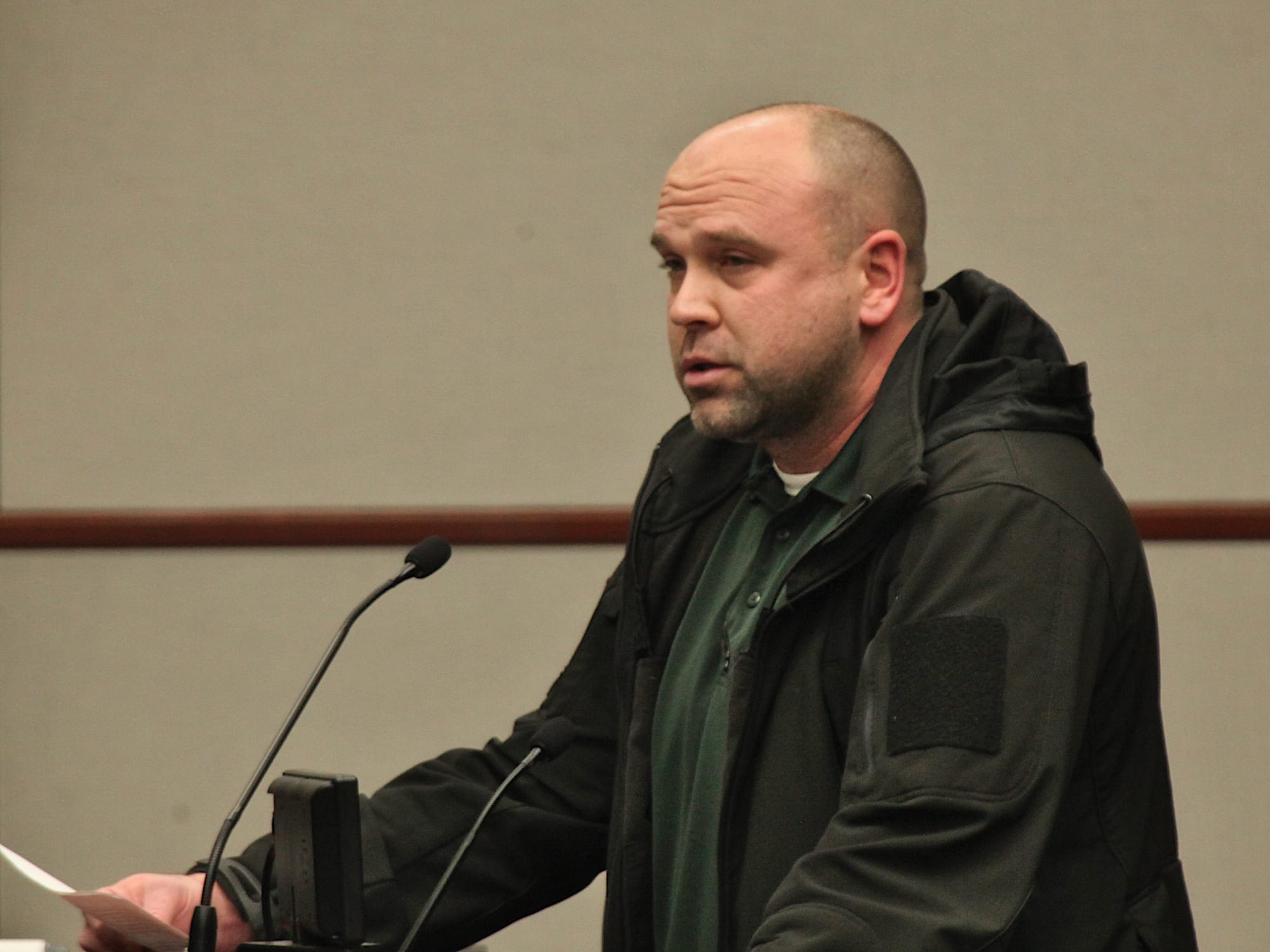

On Wednesday night, Bloomington’s city council took action that will, as councilmember Dave Rollo put it, shape the city’s public safety building footprint “for decades to come.”
The council split 5–4 on a vote to approve the Bloomington redevelopment commission’s purchase agreement with CFC Properties—for the 64,000 square feet in the western portion of the former Showers Brothers furniture factory that currently houses city hall.
Asked by Rollo if he agreed that the “decades-to-come” description of the deal’s impact is accurate, Bloomington’s mayor John Hamilton confirmed that he did.
The deal negotiated by the RDC with CFC Properties carries a price tag of $8.75 million. The proposed move includes another $14.75 million to renovate and re-configure the Showers building space.
It’s part of a bigger plan estimated to have a cost of over $30 million—which includes reconstructing the flood-damaged Fire Station #1 and remodeling Fire Station #3. A $29.5 million bond issuance, to be paid off with increased local income tax (LIT) revenues, is supposed to fund the bulk of the project. The bond issuance was already approved by the city council in early December last year.
The Showers building purchase will make it possible to combine under one roof the current occupants of city hall—which include the mayor’s office, the city council, and several city departments—and a new replacement police station and headquarters for the fire department’s administration.
Once the space inside the Showers building is renovated and reconfigured, the plan is to sell the current police station on 3rd Street, which Hamilton’s administration thinks would fetch $3 million or more.
Voting against the Showers building purchase were: Susan Sandberg, Dave Rollo, Ron Smith, and Sue Sgambelluri.
Voting for the Showers building purchase were: Matt Flaherty, Kate Rosenbarger, Isabel Piedmont-Smith, Jim Sims, and Steve Volan.
The significance of the council’s decision on Wednesday was evident in more than just Rollo’s description of the “decades-to-come” impact.
When his name was called for the roll call, as the third councilmember to vote on the Showers building purchase, Steve Volan was silent for the better part of 15 seconds. He finally decided to vote in favor of buying the Showers building.
The level of rhetoric used by councilmembers was also reflective of the weight that was attached to the decision.
Councilmember Matt Flaherty responded to councilmembers who had spoken earlier about the idea of renovating and also expanding the existing 3rd Street police station. They had criticized Hamilton’s stated intent not to pursue a 3rd Street expansion option, if the Showers building were not purchased.
Flaherty said, “[Hamilton] doesn’t think that’s a good investment. The mayor is tasked with bringing appropriations under Indiana law—that’s our system.” Flaherty continued, “The idea that he isn’t willing to bring an appropriation for an investment that he thinks is an irresponsible use of taxpayer dollars—regardless of what any council member thinks—is not a threat.”
That was a response to councilmember Susan Sandberg, who had earlier said, “I took it kind of as a threat, that if we go in that direction, then we, as a council, will be forced to raise more taxes next year, in order to get the funding to do the addition.”
Flaherty continued talking about Hamilton’s refusal to invest in an expansion of the current 3rd Street police station: “It is not coercion. It is not ‘playing’ the council. It is not Stockholm Syndrome.”
That was a response to remarks made by Rollo after an exchange with deputy mayor Mary Catherine Carmichael when she relayed a message from a conversation she’d just had with Hamilton about the use of CRED (Community Revitalization Enhancement District) funds to pay for the overall project. (Hamilton was present for part of the meeting but had departed by that time.)
Carmichael said, “I just had a conversation with mayor Hamilton and he’s willing to commit to using no CRED funds on this project.”
Carmichael relayed Hamilton’s message as a response to the objections that councilmembers Isabel Piedmont-Smith and Volan had expressed about the project’s use of CRED funds, which they believe should not be used for public safety purposes.
In its initial presentations about the project to the council last year, Hamilton’s administration had estimated using $5 million in CRED funds—in addition to $3 million from the sale of the current police station, and the proceeds from the bond issuance.
A short while after Carmichael relayed that message, Rollo took a speaking turn. Rollo wanted to know what money would replace the CRED funds. He asked Carmichael: “Where is the money coming from for the renovation? Could you tell us?”
Carmichael’s three-word answer: “I don’t know.”
Rollo responded: “Right. Neither do we. I think we’re being played here. And I resent it deeply.”
Carmichael followed up a few minutes later, saying about her previous answer, “I choked under pressure.” She had forgotten some things, adding, “We did have the bonds come in a million dollars over what we had anticipated.” She also said that the proceeds from the sale of the existing property on 3rd Street would be used to replace the CRED funding.
In the interim, Rollo made the remarks to which Flaherty was responding. Rollo said, “This process is flawed. I’ve been hearing from my colleagues that they feel coerced in this process.” He continued, “And I would appeal to my colleagues to stop the Stockholm Syndrome or whatever we’re operating under right now.” (The Stockholm Syndrome describes a condition in which hostages develop a psychological bond with their captors.)
About Hamilton’s late-in-the-game commitment that no CRED funds would be used, Rollo said, “I’m just astounded that we’re making deals on the floor of the city council chambers, about projects that have such implications.” He continued, “I just—I’m astounded by this! This is not a collaborative approach. I’ve never seen anything like this.”
Flaherty criticized the prior remarks of some colleagues by saying, “I think all of that language is reflective of the sort of hyperpolarization of this discussion and politicization, frankly, with inflammatory language that significantly mischaracterizes the facts, as well as what people are saying.”
Flaherty continued with another example of what he said was a mischaracterization of an argument he had made for the integration of police operations with the rest of city hall.
“The argument that thinking our public safety system needs improvement, is somehow tantamount to saying that the police are, and I’m quoting now, ‘a bunch of thugs wanting to pull their guns on people’ is an absurd argument.” Flaherty added, “I have never said anything of the sort.”
He was quoting Sandberg, who said earlier in the meeting about Bloomington police officers, “They’re not a bunch of thugs out there wanting to pull their guns out on people. That isn’t happening here in Bloomington, because we wouldn’t allow it. That’s not who Bloomington is.”
Earlier in the same speaking turn, Sandberg described how new arrivals at the transit station, who need assistance, often go to the police station, located next door, where they can get a referral to the police department’s social work team, which is embedded in the police department.
About the social workers in the police department, Sandberg said, “It’s an innovative thing. It’s an evolutionary thing.”
Sandberg then responded to Flaherty’s previous contention that an argument against moving the police station to Showers is based on status quo thinking. Sandberg said, “Bloomington is not behind there—when we talk about fear of change and loss of familiarity and status quo.” She continued, “That’s so condescending to the evolution that the police department has seen over the years.”
Sandberg added, “We are not a community that has not embraced the need for our police department to be respectful of everyone who lives here, including marginalized people.”
During that part of Sandberg’s response, Flaherty was shaking his head.
What Sandberg called condescending was Flaherty’s contention that he held a different view from other city councilmembers in believing that, “The nature of both policing and public safety is, and should be, changing and evolving.” Flaherty said, “At a high level, I think that’s what this entire conversation is about.” He added, “So I think that this positive cultural change, and the integration of public safety services across police, fire and civil city services is a crucial change.”
Council president Sue Sgambelluri agreed with the idea that the nature of policing needs to evolve. She said, “I do find it very compelling to think in terms of a public safety function and a police function that grows and evolves and changes over time. I wholeheartedly agree.” Sgambelluri added, “I believe our police department has done that. And I think that that fact has been recognized by other police departments and recognized by CALEA (Commission on Accreditation for Law Enforcement Agencies, Inc.).
Sgambelluri did not see putting police under the same roof as the mayor’s office and the other departments as essential to the kind of evolution that is important. “What is not compelling to me is the suggestion that the police department has to be right next door in order for this to happen.”
She continued, “There’s almost an implication there that [Bloomington police] need to have their feet held to the fire to do the right thing, to behave with values that are consistent with our community’s values.” She added, “And I don’t find that to be a compelling argument. I think that our police have advanced and evolved over time with social workers with other different non-sworn officers…without being next door to city administration.”
Councilmember Kate Rosenbarger didn’t see it the same way as Sgambelluri. For Rosenbarger, the colocation of police and fire with the rest of city hall was essential. “I think colocation is the most compelling piece of this idea,” Rosenbarger said.
Rosenbarger said that for many people, feeling safe is about having a roof over your head, which is something the city’s housing and neighborhood development (HAND) department deals with. For other people, she continued, feeling safe is about getting from their home to their job on a daily basis, which are issues handled by the engineering and planning and transportation departments.
For that reason, Rosenbarger said, it makes sense to bring all the city departments under one roof so staff can more easily work together. “I think as we transform how we provide services to our residents and what our residents need over time, in terms of public safety, I really think the most compelling thing is this colocation of all city staff or most city staff.”
Rosenbarger’s hedge—of “most” versus “all” city staff—was something that was addressed by councilmember Steve Volan in his remarks.
By way of background, the public works department is planned to be relocated out of city hall, in connection with a move by city of Bloomington utilities (CBU) from its Miller Road location to the former Winston Thomas wastewater treatment plant property. Winston Thomas is located on Walnut Street, on the edge of the current city limits.
Volan recognized the benefit of departments being colocated—but said that’s also an argument for public works staying in the Showers building or moving CBU administration to Showers.
Given that the administration’s proposal is not to acquire the additional space in the Showers building, in order to have more room for public works or to add CBU, Volan said the administration’s proposal “is really about colocation of public safety specifically, and not some general principle that every department in the city should be in city hall.”
Councilmember Ron Smith said the council’s common ground is that the police and fire department facilities need to be renovated or replaced. Smith said he thinks there’s general agreement that police and fire are colocated. But Smith added, “There’s a lot of different ways to achieve these goals.”
“Showers just doesn’t seem to be the solution to me,” Smith said.
Councilmember Jim Sims characterized a lot of what he’d heard from other councilmembers as “either referendums or indictments” as opposed to focusing on the future space needs for police.
Sims said he’d heard talk about status quo, reform, integrated policing, and recruitment. All of those topics are important, he said, but that was not the question in front of the council, which involves space needs. At a previous meeting, Sims had described the option of renovating the existing police station as “a joke.”
The Showers building, a 110-year old brick building that was constructed as a furniture factory, is not suitable as a headquarters for police operations, Rollo said.
But for Rollo, the most important consideration was the fact that the police union had reported unanimous opposition to moving operations to the Showers building. “They’re primarily concerned about their own safety. And they’re primarily concerned about their ability to fulfill their duties.” He listened to the police officers, Rollo said, because, “How can we presume to know more than they do?”
“When it’s unanimous that they don’t want to move, because of the ingress-egress, because of the vulnerability of the building, because of the fact that it can’t withstand disasters, I listen.”
Flaherty’s counter to the idea that complete deference should be given to the sentiments of the police officers was to say, “With respect to who’s affected and making sure we’re thinking about who’s affected, central in my mind throughout all of this is in fact, the Bloomington residents.”
There are a lot of stakeholders, Flaherty said, like the police union, police chief, fire chief, other city departments, and the city council. Flaherty added, “But it’s the Bloomington residents, actually, and their service that it is foremost in my mind.”
The council was initially asked to approve the appropriation ordinance with the Shower building purchase at its Dec. 21 meeting. On that occasion the council postponed the question until Jan. 18.
A city council ad hoc committee was formed to study the alternatives the administration had laid out. The committee met three times after the start of the year, but before Jan. 18.
At the Jan. 18 meeting, the council again postponed the question until this past Wednesday.
The council’s Jan. 25 meeting concluded around 11:30 p.m.
Photos: City council meeting (Jan. 25, 2023)
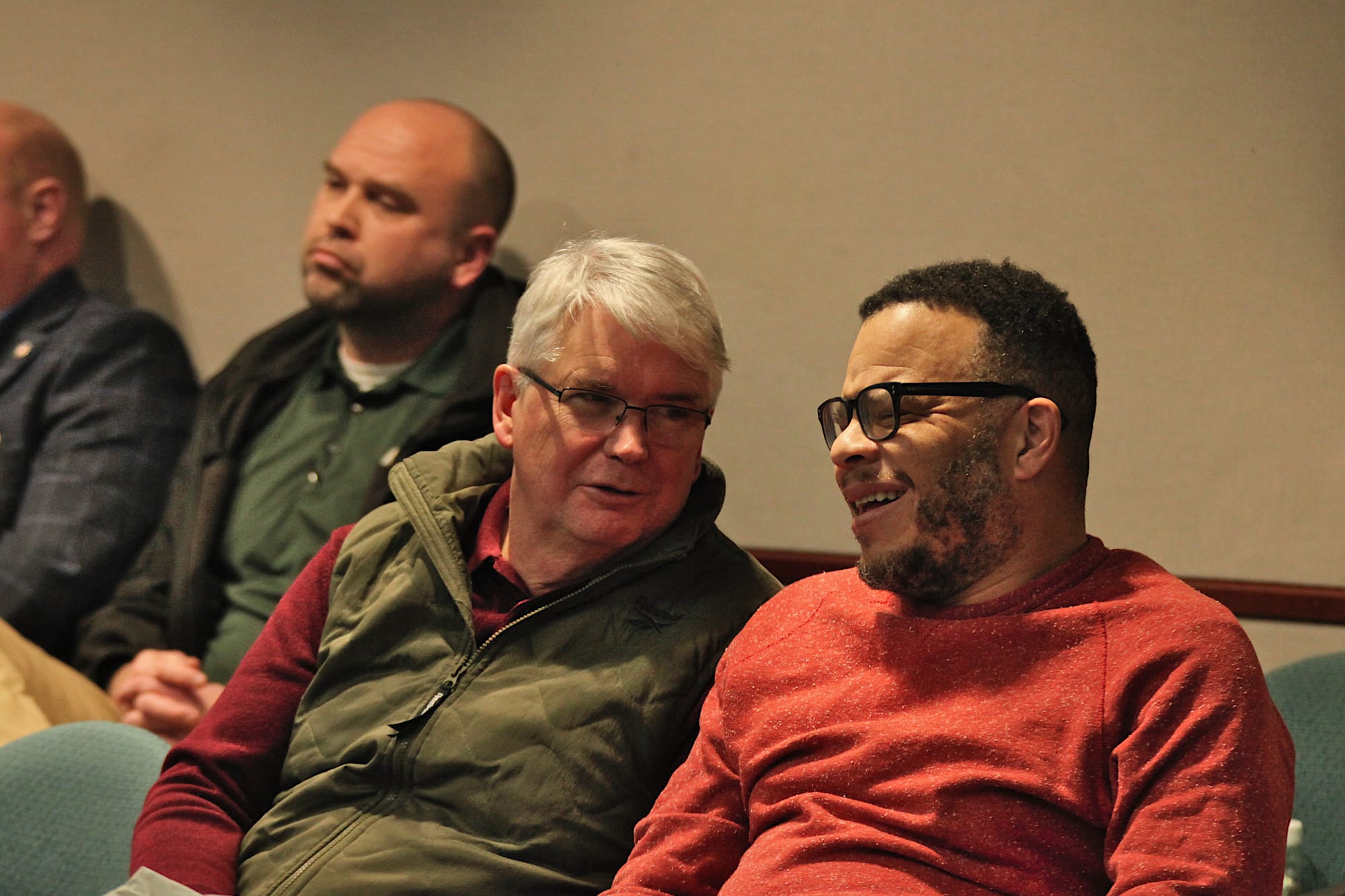
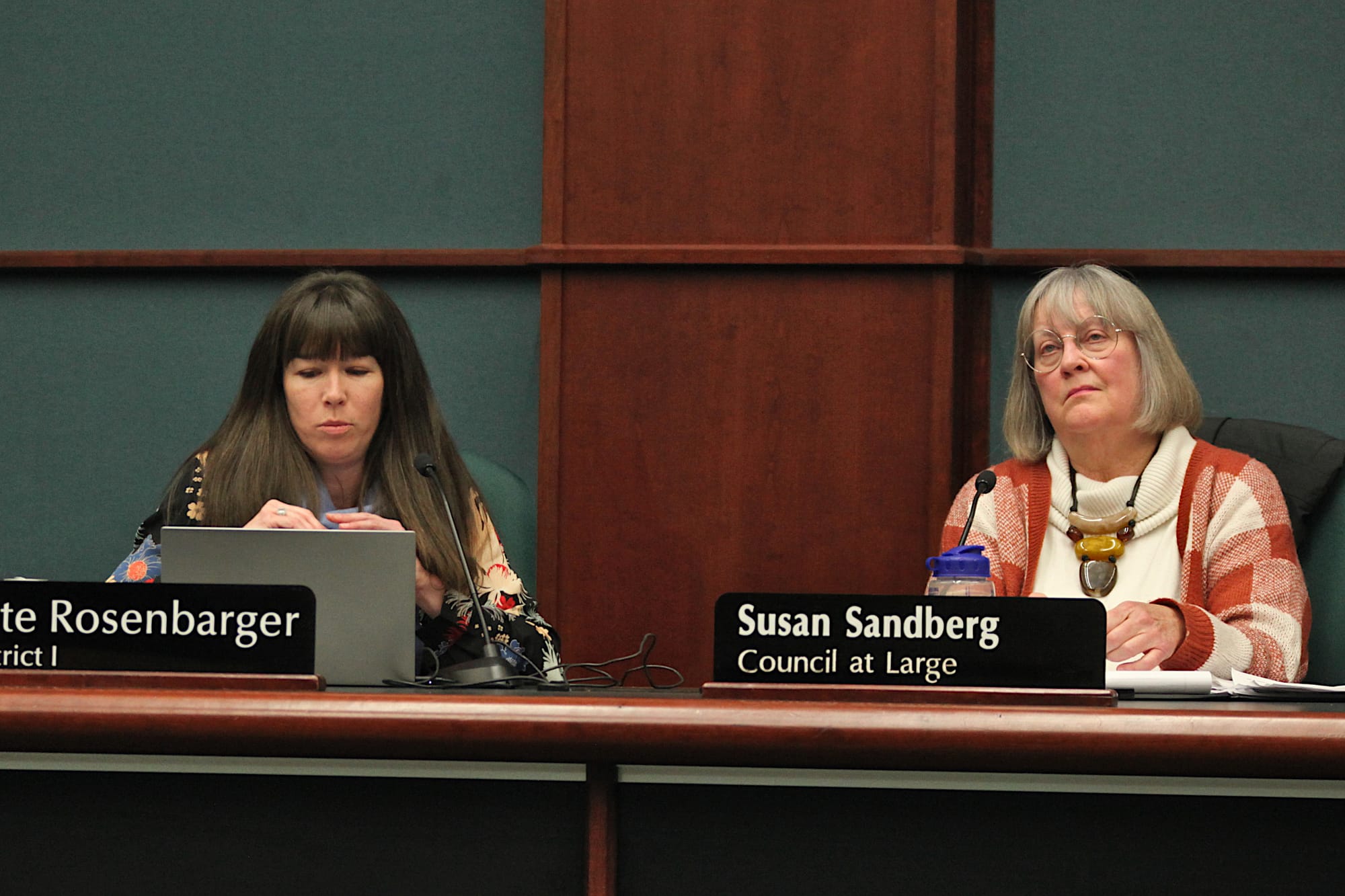



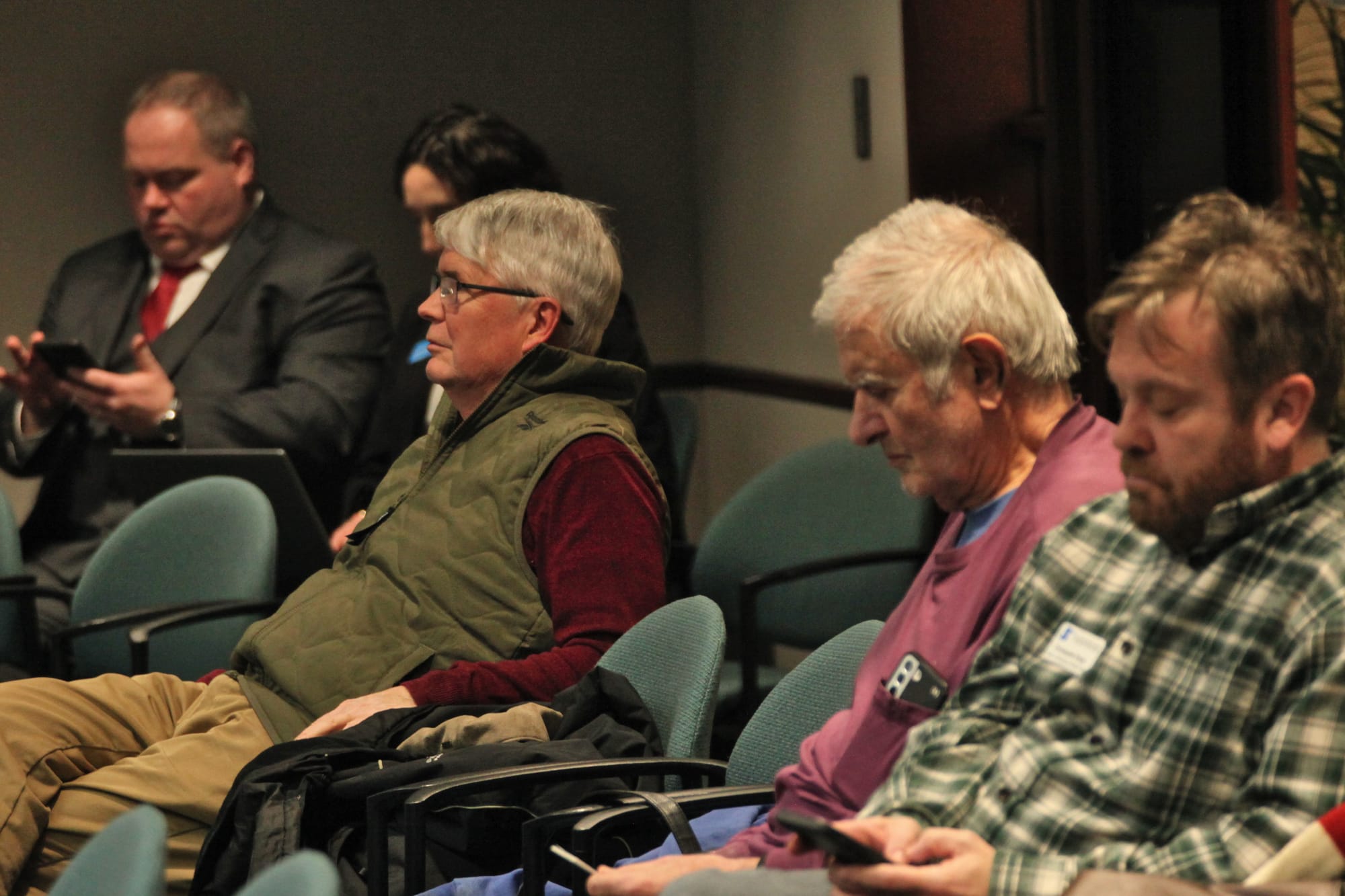




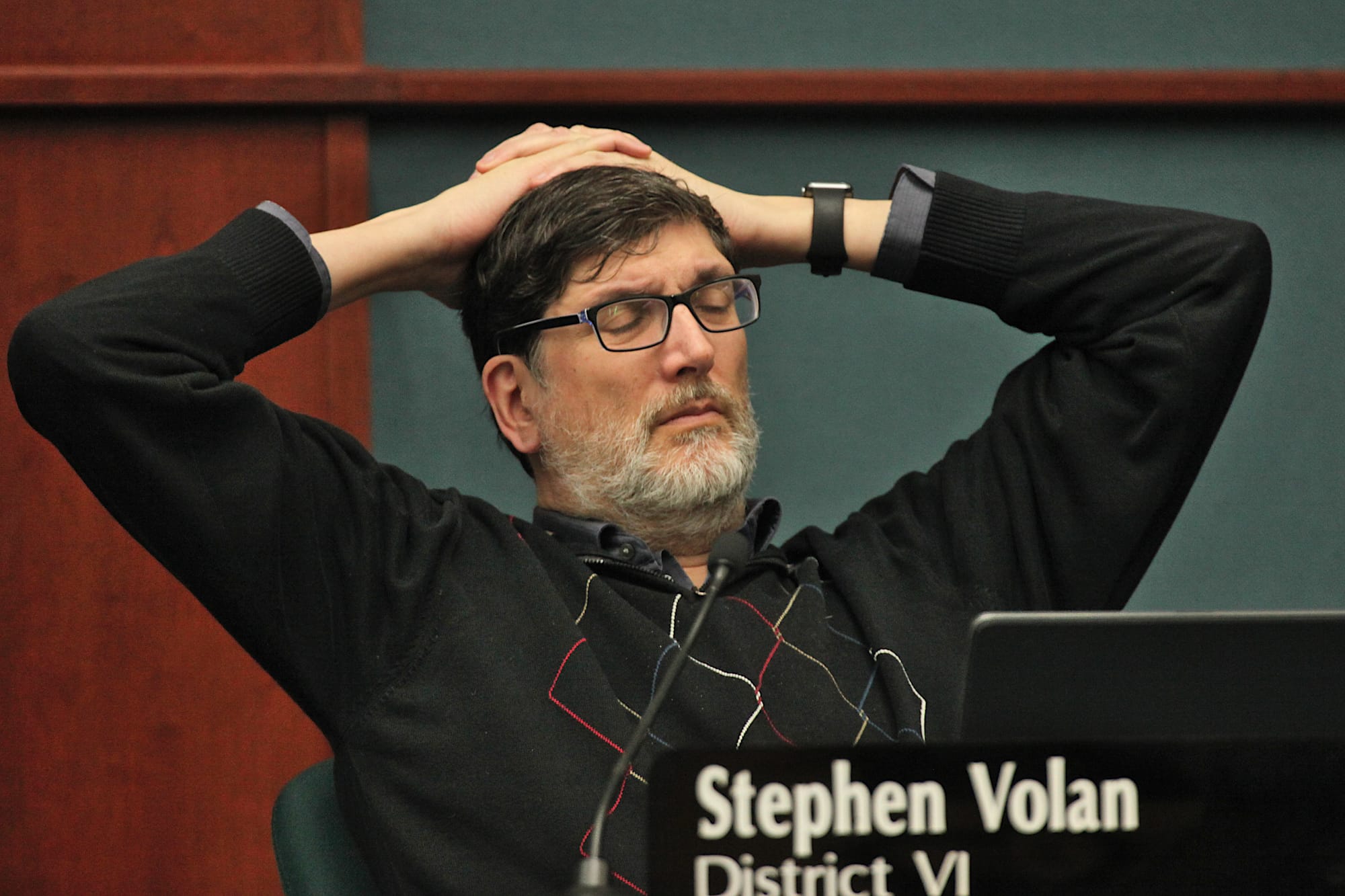
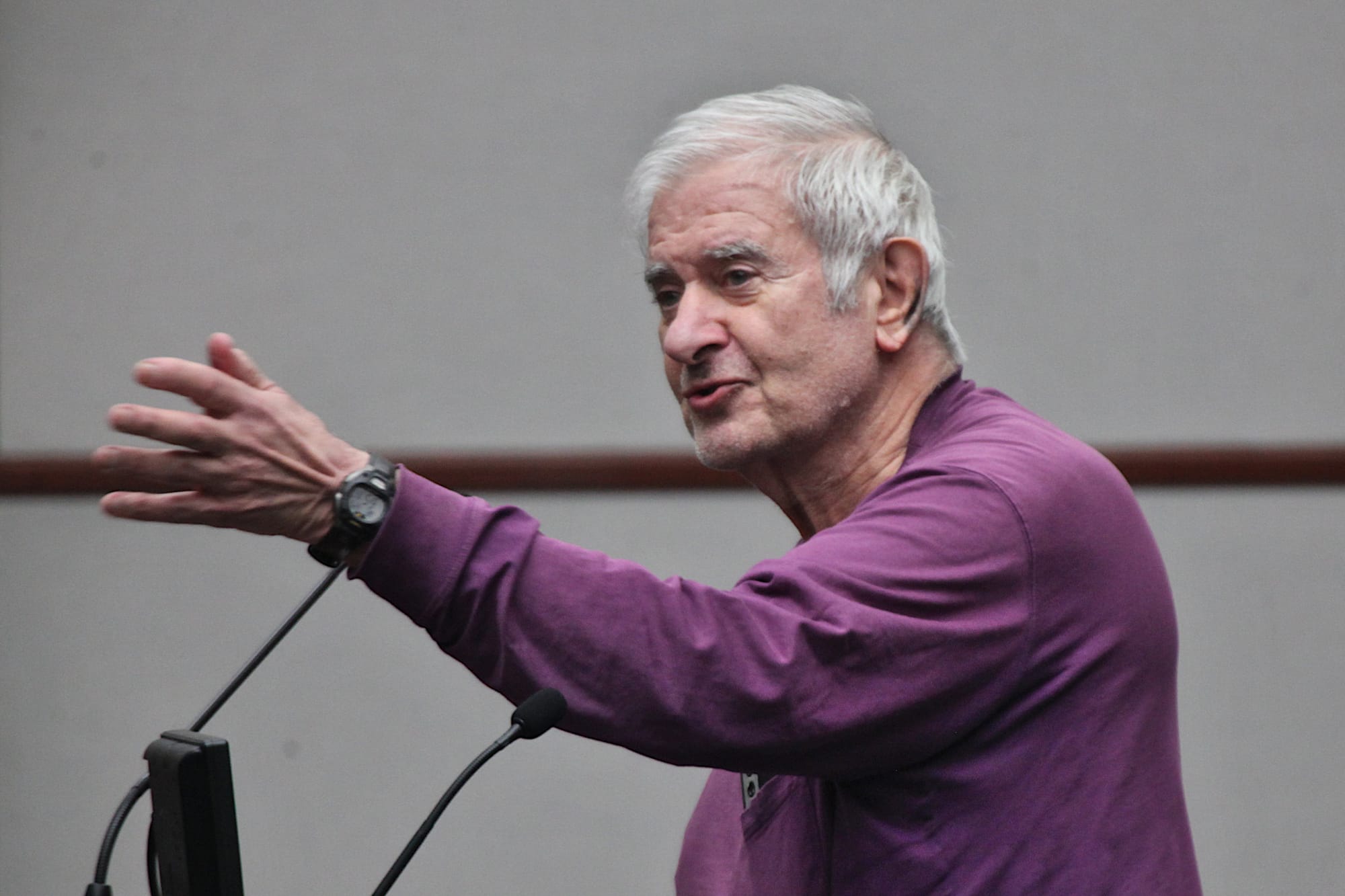



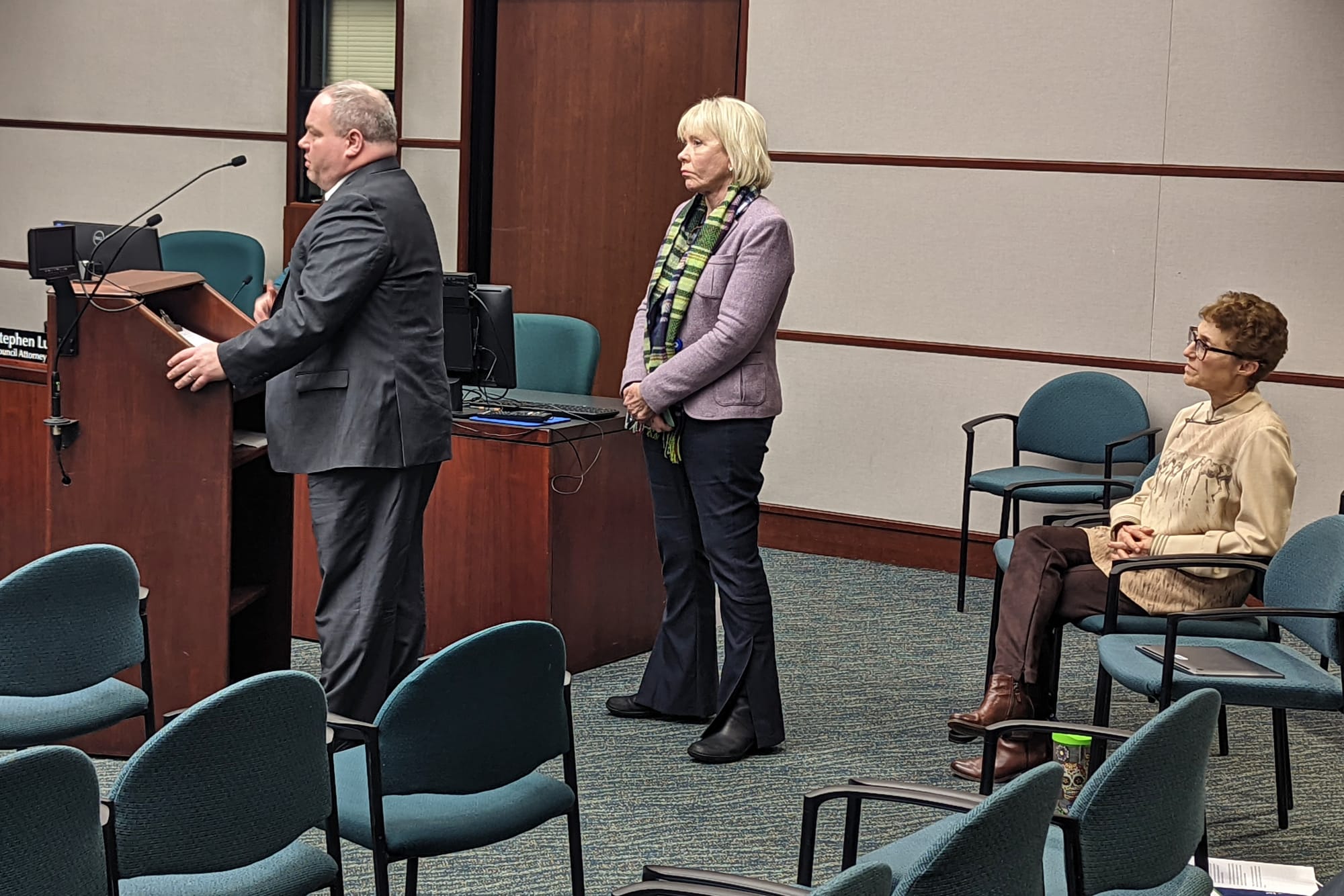





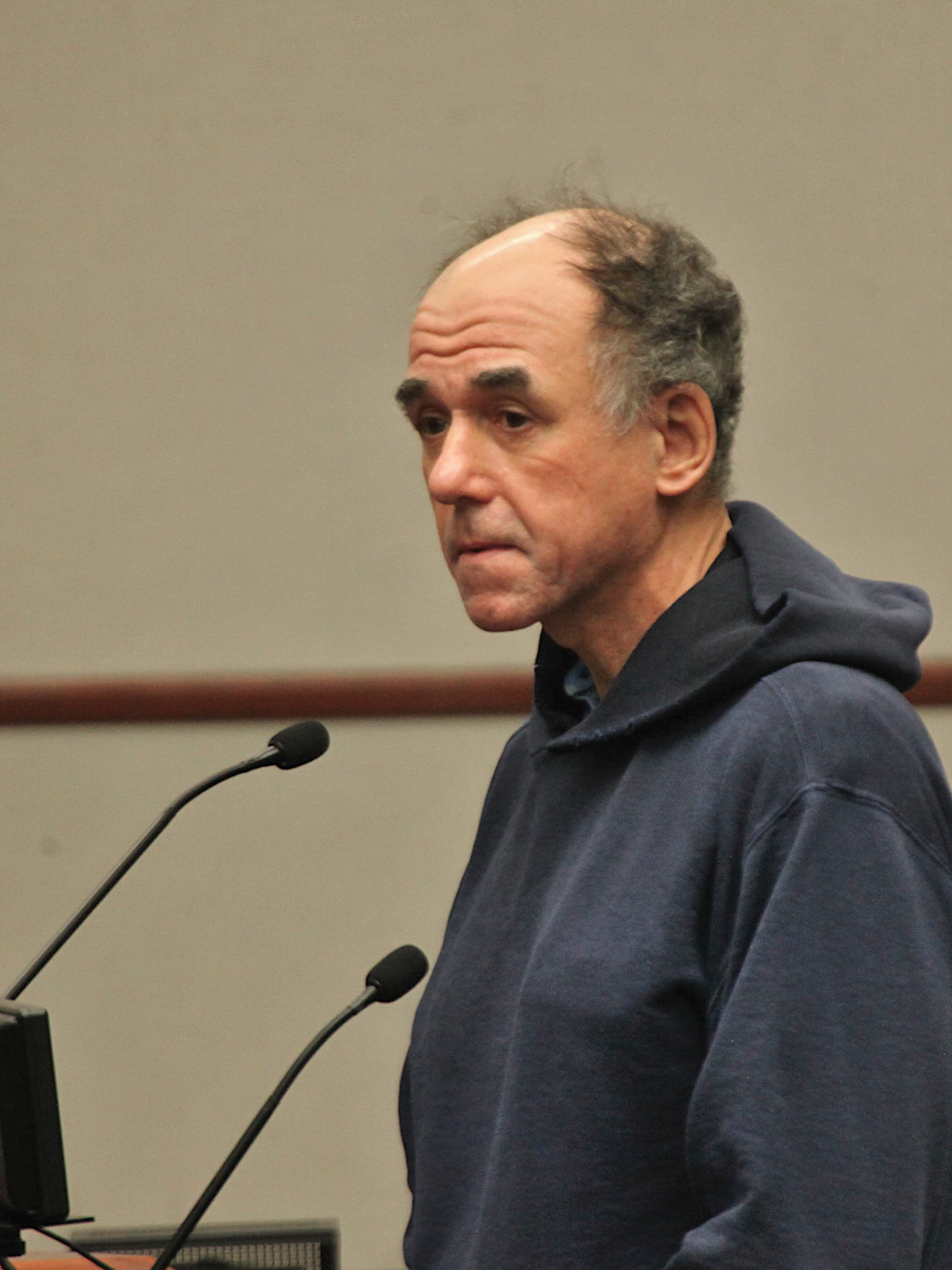




Comments ()